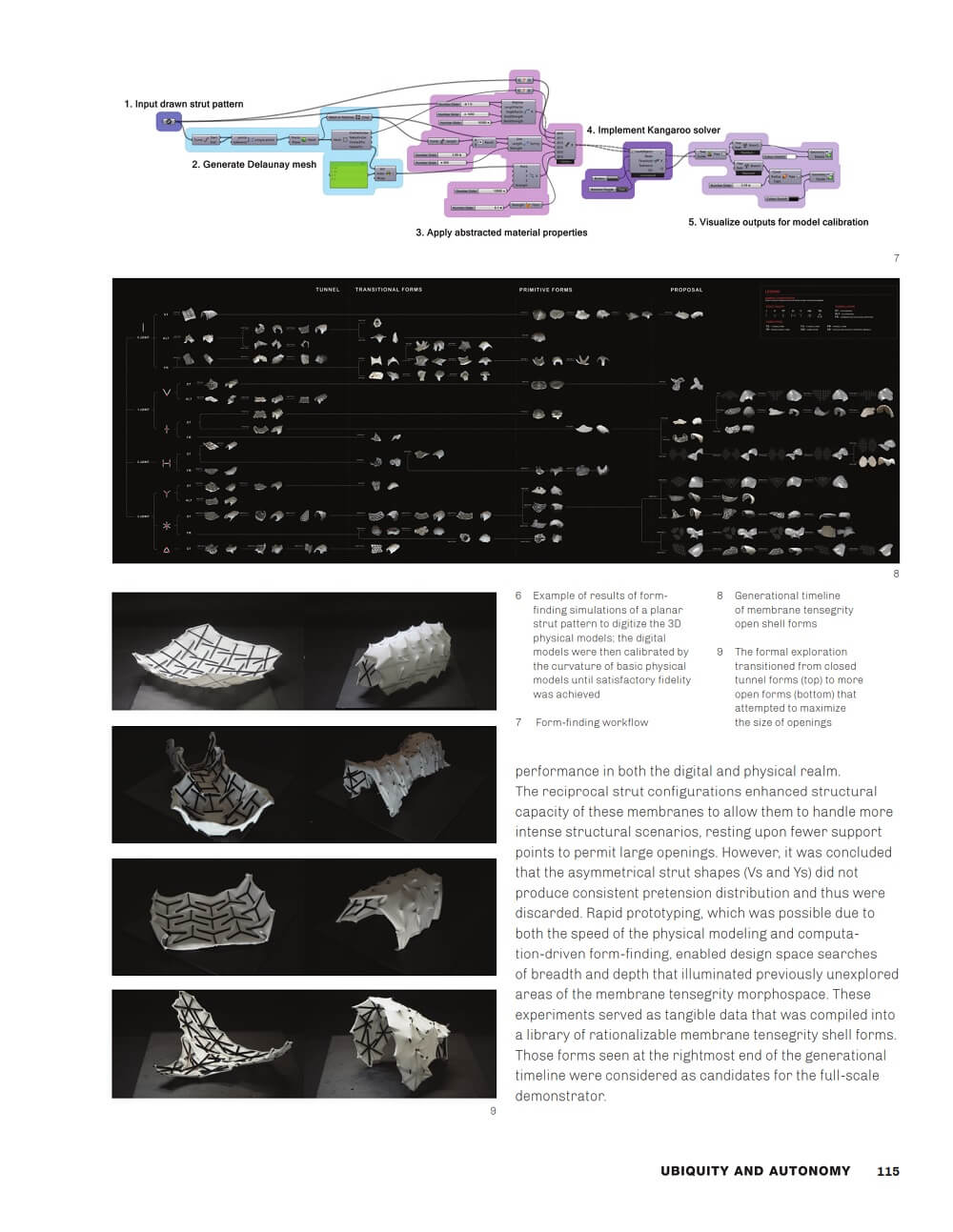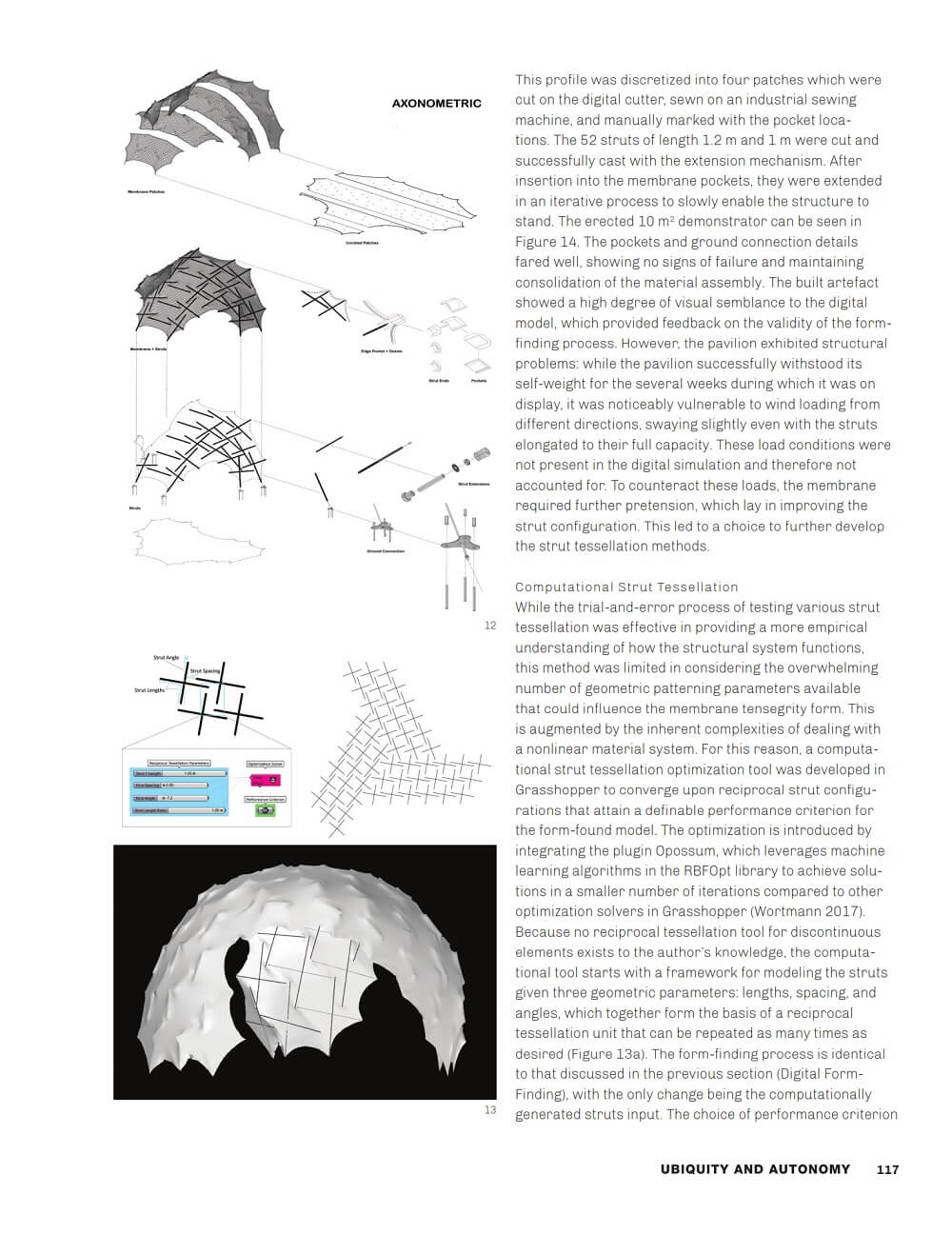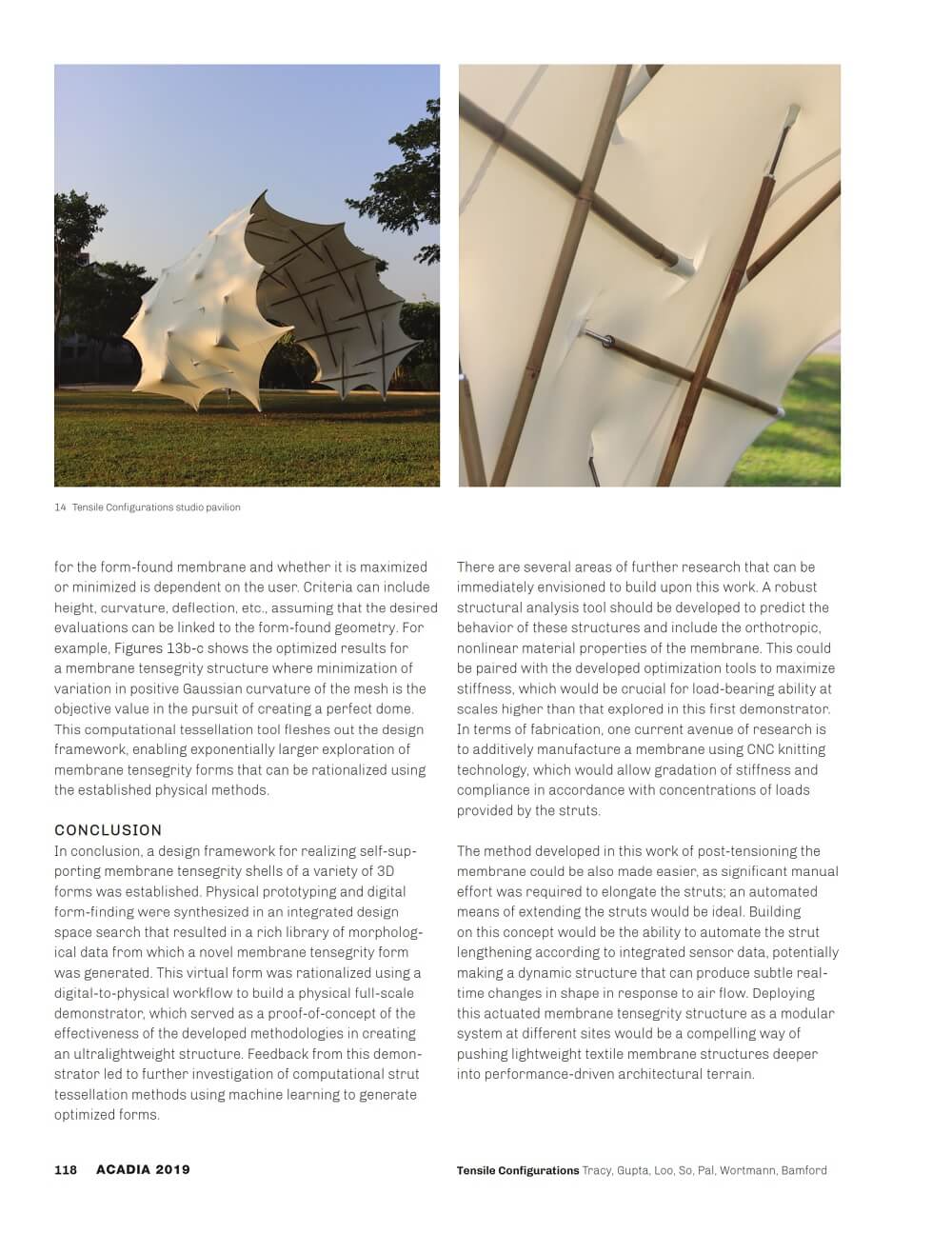Tensile Configurations

Structural membranes exhibit advantages over slab and frame structures, accommodating large deformations while still elegantly combining spatial enclosure with material efficiency. One of the most promising types of membrane structures are membrane tensegrity structures, which are composed of discontinuous struts embedded in a tensile membrane. To date, membrane tensegrity structures are limited to completely closed formations or require extensive tethering, hindering their applicability for diverse architectural contexts.

In this article by Kenneth Tracy, So Jing Wen, Sachin Sean Gupta, Abhipsa Pal, Loo Yi Ning Stella, Thomas Wortmann and Robert Bamford; a design framework is presented for creating self-supporting membrane tensegrity shell structures with spatial openings, enabled by novel reciprocally tessellated strut configurations. Through a combination of heuristic physical prototyping and digital formfinding tools, a library of membrane tensegrity forms has been developed that serves as tangible data for an expanded morphospace.

To test the effectiveness of the established methods, a 10 m2 membrane tensegrity shell pavilion was built as a first large-scale demonstrator. Feedback from this demonstrator led to the development of computational strut tessellation tools that enable the search for informed, performance-driven design space.





























Comments